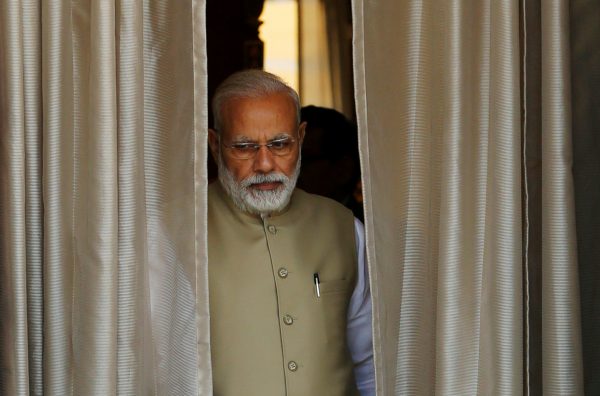Just a week earlier, Australian Prime Minister Malcolm Turnbull was winning plaudits in India. A successful multi-day visit dipped into complex economic and security questions, along with the obligatory public transport selfie. But in the process, a prudent Turnbull reset expectations about any trade agreement with India.
Previous Australian prime minister Tony Abbott had unwisely set an impossible bar in his excitement to conclude trade deals with South Korea, Japan and China. Turnbull’s careful rhetoric took the heat out of these expectations, allowing the diplomatic process an opportunity to quietly grind on beyond the glare of politics. As Turnbull himself said towards the end of his trip, ‘It may be that the conclusion will be reached that the parties are too far apart to enable a deal to be reached at this time’.
This prediction is all but certain now. The Turnbull government’s announcement of sweeping immigration policy changes aimed squarely at a domestic Australian audience clashes violently with India’s own policy direction. Just as Australia zeroes in on agricultural and resource tariffs and quotas in the international trade arena, India seeks to dismantle barriers to labour mobility as a first-order priority. While Turnbull was upfront during his visit about the difficulties of temporary migration to Australia, the new policy direction is anathema to Indian interests.
The reduction in eligible occupations for skilled visas, shorter visa eligibility periods, higher prices, more red-tape and tougher English language requirements are viewed as barriers in the world of labour mobility. Each is a small disincentive for employers to sponsor skilled workers to Australia. We cannot accurately measure the collective dampening effect they will have on the behaviour of employers. Taken as a package, this represents the most substantial tightening of skilled migration policy in the last two decades.
Instead of looking to the migration concessions carved out in the China–Australia Free Trade Agreement as a foundation for any agreement, the Indian government now confronts a much more difficult policy. A full quarter of all temporary skilled migrants in Australia come from India, who mostly work in the IT industry. The unease was clear to see when Prime Minister Narendra Modi called Turnbull directly the week following the announcement for what must have been a frank conversation.
Why is this such a big deal? India has led the developing world in pushing richer countries for better access to labour markets. Economists increasingly point out the biggest single barrier to global GDP is restrictions on people movement. While India remains the largest remittance receiving country in the world, the trend is worryingly negative. Sick of waiting for multilateral action, India is taking on a much more aggressive stance using existing tools. Last year, India requested formal consultations with the United States through the World Trade Organization (WTO) in regards to the price of L-1 and H-1B visas. The WTO dispute raises questions about US compliance with a number of provisions in the General Agreement on Trade in Services (GATS).
For the past two decades, Australia has been among the most open developed countries with regards to migration. This policy framework has seen the country’s share of overseas-born residents reach 29 per cent, more than double either the United States or United Kingdom. But Australia is now at risk of being dragged through a similar WTO dispute process by India at the very same time trade negotiators are trying to progress the free trade agreement. Several international trade experts have publicly queried whether the recent migration policy changes comply with Australia’s commitments under the GATS, commitments which go beyond what the United States has agreed to.
There is a genuine difficulty here. On the one hand, Turnbull and Education Minister Simon Birmingham have set out to entice additional Indian students to come to Australia to boost the country’s higher education export market. On the other, 80 per cent of all higher education and vocational education students consider working in Australia following the completion of their studies, many with a view to residency. Balancing migration policy for both domestic political imperatives and economic considerations in an era of increasing anti-migrant sentiment will not be easy.
Perhaps the space between Australia and India at this point in time is simply too large, as Prime Minister Turnbull has said. This infers the future may be different. But we should be wary as progress won’t simply happen with the passage of time. For example, the opposition Labor Party’s new policy directly precludes trading off certain migration concessions in free trade agreements. This effectively means an Indian–Australia free trade agreement cannot happen under a Labor government unless India is willing to accept only the smallest migration concessions. This is unimaginable.
Whether the agreement can be salvaged in the coming years will depend on a mixture of diplomatic nous, political will and global events. Whether it should be salvaged is another question entirely.
Henry Sherrell is a research officer at the Development Policy Centre, Crawford School of Public Policy, The Australian National University.

